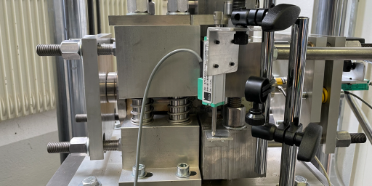Repair and reinforcement of roadways using composite pavements with UHPC
Development of a new repair method to replace cracked bituminous pavements with a thin layer of UHPC that significantly extends the service life and reduces life-cycle costs compared to conventional methods.
Factsheet
- Lead school School of Architecture, Wood and Civil Engineering
- Funding organisation Innosuisse
- Duration (planned) 01.08.2019 - 31.10.2023
- Project management Nicolas Bueche
- Head of project Dr. Clemens Kielhauser
- Project staff Daniel Büttner
- Keywords Road construction materials, repair, composite materials
Situation
Damage to bituminous pavements is a common problem in road construction and maintenance. This damage can be caused by various factors such as traffic loads, temperature fluctuations and the ageing of the pavement material. If not repaired, this damage can lead to further deterioration of the pavement, reduced driving comfort and increased maintenance costs. Furthermore, damage to the road surface can affect road safety by creating potential hazards. To address these problems, it is important that road operators in Switzerland regularly monitor their roads and repair damage to the bituminous pavement. Traditional repair methods involve repairing damage locally (e.g. by filling surface cracks) or renewing the surface layer of the existing pavement. However, these traditional repair methods have a limited service life and are often only a temporary solution if the root cause of the pavement damage is not addressed.
Course of action
The project seeks to develop a composite structure that combines the strengths of ultra-high-performance concrete (UHPC) and asphalt for use in road construction. The focus of the project is on developing a repair method for cracked bituminous road pavements that increases the overall load-bearing capacity at the same time. The area of application is the national and cantonal road network, where the use of this material can significantly improve the longevity of the roads. One of the biggest challenges in this project is to ensure the economic viability of the material. Despite the high material costs, the long-term benefits and increased durability of the UHPC composite structure can provide a cost-effective solution. By comparing the cost and benefits of this innovation with conventional methods, the project will provide valuable insights into the economic feasibility of using UHPC in road construction. With this project, the team is keen to demonstrate the potential of UHPC as a cost-effective solution for road rehabilitation and improvement. By combining the strength and durability of UHPC with the versatility of asphalt, the project will offer a new and innovative approach to road construction and maintenance. The results of this project will be closely monitored and evaluated to determine the effectiveness and feasibility of this solution for future road construction projects.

